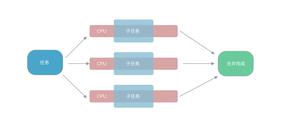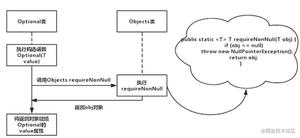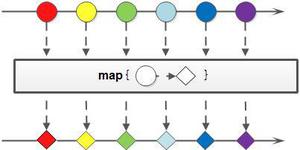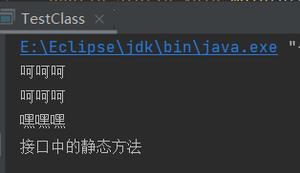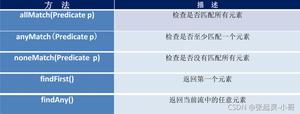java8 - 4

import java.io.PrintStream;import java.util.Comparator;
import java.util.function.BiFunction;
import java.util.function.BiPredicate;
import java.util.function.Consumer;
import java.util.function.Function;
import java.util.function.Supplier;
import org.junit.Test;
/*
* 一、方法引用:若 Lambda 体中的功能,已经有方法提供了实现,可以使用方法引用
* (可以将方法引用理解为 Lambda 表达式的另外一种表现形式)
*
* 1. 对象的引用 :: 实例方法名
*
* 2. 类名 :: 静态方法名
*
* 3. 类名 :: 实例方法名
*
* 注意:
* ①方法引用所引用的方法的参数列表与返回值类型,需要与函数式接口中抽象方法的参数列表和返回值类型保持一致!
* ②若Lambda 的参数列表的第一个参数,是实例方法的调用者,第二个参数(或无参)是实例方法的参数时,格式: ClassName::MethodName
*
* 二、构造器引用 :构造器的参数列表,需要与函数式接口中参数列表保持一致!
*
* 1. 类名 :: new
*
* 三、数组引用
*
* 类型[] :: new;
*
*
*/
public class TestMethodRef {
//数组引用
@Test
public void test8(){
Function<Integer, String[]> fun = (args) -> new String[args];
String[] strs = fun.apply(10);
System.out.println(strs.length);
System.out.println("--------------------------");
Function<Integer, Employee[]> fun2 = Employee[] :: new;
Employee[] emps = fun2.apply(20);
System.out.println(emps.length);
}
//构造器引用
@Test
public void test7(){
Function<String, Employee> fun = Employee::new;
BiFunction<String, Integer, Employee> fun2 = Employee::new;
}
@Test
public void test6(){
Supplier<Employee> sup = () -> new Employee();
System.out.println(sup.get());
System.out.println("------------------------------------");
Supplier<Employee> sup2 = Employee::new;
System.out.println(sup2.get());
}
//类名 :: 实例方法名
@Test
public void test5(){
BiPredicate<String, String> bp = (x, y) -> x.equals(y);
System.out.println(bp.test("abcde", "abcde"));
System.out.println("-----------------------------------------");
BiPredicate<String, String> bp2 = String::equals;
System.out.println(bp2.test("abc", "abc"));
System.out.println("-----------------------------------------");
Function<Employee, String> fun = (e) -> e.show();
System.out.println(fun.apply(new Employee()));
System.out.println("-----------------------------------------");
Function<Employee, String> fun2 = Employee::show;
System.out.println(fun2.apply(new Employee()));
}
//类名 :: 静态方法名
@Test
public void test4(){
Comparator<Integer> com = (x, y) -> Integer.compare(x, y);
System.out.println("-------------------------------------");
Comparator<Integer> com2 = Integer::compare;
}
@Test
public void test3(){
BiFunction<Double, Double, Double> fun = (x, y) -> Math.max(x, y);
System.out.println(fun.apply(1.5, 22.2));
System.out.println("--------------------------------------------------");
BiFunction<Double, Double, Double> fun2 = Math::max;
System.out.println(fun2.apply(1.2, 1.5));
}
//对象的引用 :: 实例方法名
@Test
public void test2(){
Employee emp = new Employee(101, "张三", 18, 9999.99);
Supplier<String> sup = () -> emp.getName();
System.out.println(sup.get());
System.out.println("----------------------------------");
Supplier<String> sup2 = emp::getName;
System.out.println(sup2.get());
}
@Test
public void test1(){
PrintStream ps = System.out;
Consumer<String> con = (str) -> ps.println(str);
con.accept("Hello World!");
System.out.println("--------------------------------");
Consumer<String> con2 = ps::println;
con2.accept("Hello Java8!");
Consumer<String> con3 = System.out::println;
}
}
以上是 java8 - 4 的全部内容, 来源链接: utcz.com/z/391044.html

